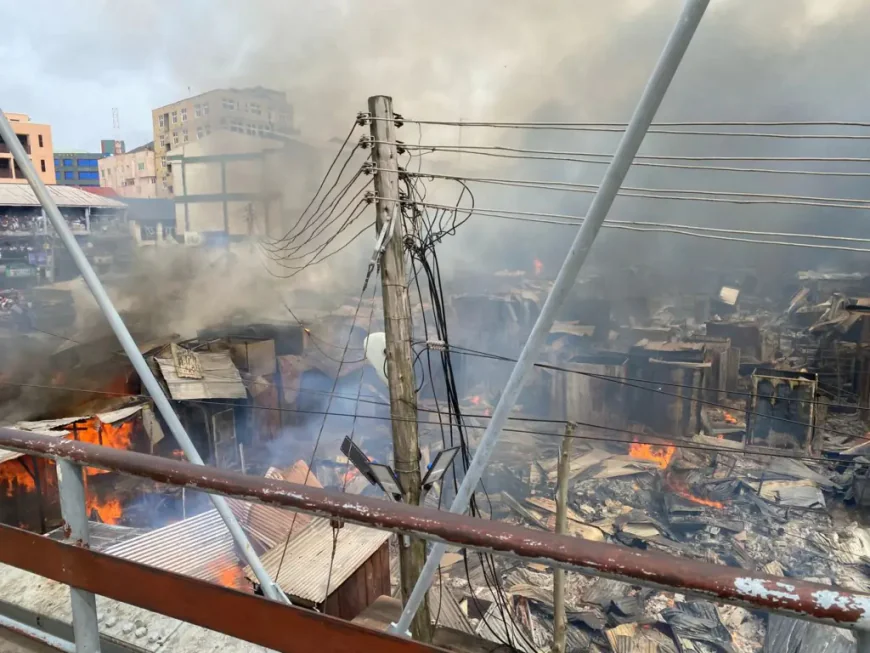A Night of Ashes and Resilience: Kumasi Grapples with Another Devastating Fire
A devastating fire struck Kumasi's Baba Ayoyo slum on July 9, 2025, displacing over 400 residents and highlighting persistent urban planning challenges and the urgent need for enhanced fire safety and relief efforts in the city.

Just as the embers from one major fire incident in March began to cool, Kumasi, Ghana's bustling Garden City, finds itself once again counting losses after a devastating blaze swept through the Baba Ayoyo slum in Ahodwo, Nhyiaeso constituency, on Wednesday night, July 9, 2025. The inferno, which ignited around 8:30 p.m., left a trail of destruction, displacing over 400 vulnerable residents, predominantly women and children, and reducing more than 100 makeshift structures to ashes.
The scenes on Thursday, July 10, were harrowing. Families, caught off guard while many residents were reportedly watching a football match, lost everything – homes, personal belongings, and school materials. Children wandered disoriented, unable to attend school, while parents grappled with the grim reality of seeking refuge on verandas and the uncertainty of their next meal. "We couldn't take anything," a distressed woman shared with reporters, her voice laden with despair.
This latest disaster underscores a grim pattern for Kumasi, which has faced multiple significant fire outbreaks in recent memory. While investigations are underway into the cause of the Baba Ayoyo fire, with some victims alleging arson related to a personal dispute, the incident immediately brings to mind the "Black Friday" inferno that ravaged Adum, the city's central business district, on March 21, 2025. That blaze, described as one of the most horrific in recent history, destroyed major storey-buildings, hundreds of shops and stalls, and merchandise worth millions of Ghana Cedis.
The challenges faced by the Ghana National Fire Service (GNFS) in tackling these urban infernos are strikingly similar:
-
Congestion and Access: In both the Adum market and the Baba Ayoyo slum, narrow alleys and haphazardly constructed structures severely impede the access of fire tenders, delaying crucial response efforts and allowing fires to spread rapidly. This was a critical issue during the Adum fire, where fire tenders reportedly struggled to reach the heart of the blaze.
-
Highly Combustible Materials: The prevalence of wooden structures and the storage of highly flammable goods in densely packed areas exacerbate the intensity and speed of these fires, making containment exceptionally difficult.
-
Uncertain Causes and Investigations: While electrical faults are often suspected, and alleged foul play is now surfacing in the Ahodwo incident, concrete causes often remain elusive, making it harder to implement targeted preventive measures.
Assembly Member for the Ridge Nhyiaeso electoral area, Abraham Boadi, expressed grave concern over the scale of displacement in Baba Ayoyo, acknowledging the immense challenge of finding shelter for so many. The National Disaster Management Organisation (NADMO) is scheduled to meet with victims today, July 11, to assess losses and coordinate relief efforts.
This latest tragedy in Kumasi serves as yet another stark reminder of the urgent need for:
-
Improved Urban Planning and Regulation Enforcement: Especially in informal settlements and congested market areas, stricter enforcement of building codes, ensuring accessible emergency routes, and managing temporary structures are paramount.
-
Enhanced Fire Safety Infrastructure: Investment in readily accessible fire hydrants, modern firefighting equipment, and proactive electrical system overhauls in old, high-risk areas.
-
Community Awareness and Preparedness: Ongoing education on fire prevention, safe electrical practices, and emergency protocols for residents, particularly in vulnerable communities.
-
Support for Victims: Robust and timely support mechanisms, including temporary housing, food, and financial aid, are critical for helping affected families rebuild their shattered lives.
As Kumasi picks up the pieces once again, the collective hope is that this recent devastation will finally galvanize a concerted, sustained effort from all stakeholders – government, local authorities, businesses, and residents – to prevent such heartbreaking incidents from recurring. The resilience of the Ghanaian spirit is undeniable, but it should not have to be constantly tested by preventable disasters.


